As has been widely reported, sales of cannabis concentrates are hot and only getting hotter. Late last year, cannabis market intelligence firms BDS Analytics and Arcview Market Research jointly released a report titled “Concentrates: The Hottest Product Category in Cannabis,” which found concentrate sales in the United States reached nearly $3 billion in 2018 and may reach $8.4 billion by 2022. Yet paradox lives in the heart of the cannabis vaping sector. Companies enjoy enviable annual growth but do not appear to be thrilled with the hardware they have to work with, even though hardware improves every year. One could call the situation a convergence of insecurity and opportunity, with the average consumer ravenous, consuming everything in their path, and asking just two main things of their cannabis vape: Work and don’t leak too much.
Concentrate sales in the United States reached nearly $3 billion in 2018 and may reach $8.4 billion by 2022.
What do consumers want?
Goals for technology development vary based on perceived consumer desires, and eagerness to meet the variety of demand has led to stratification in the commercial market. The resulting categories include weed pens, portable vaporizers, desktop models, and e-rigs and e-nails. Each has a specific purpose.
The lion’s share of the market wants convenience in the form of cartridge or disposable pens serving up distillate-derived cannabis oil. A far smaller share of the market remains devoted to consuming extracts and flower in raw form via a growing number of convection or conduction devices, though those consumers more than make up for their numbers through sheer passion for the product. That passion extends to the rather sophisticated and expensive rigs required to turn a prized gram of lovingly produced live resin into plumes of thick vapor that faithfully renders the flavor of the underlying cannabis.
“We’ve approached the market by identifying problems consumers are experiencing and the gaps or shortcomings of the competition,” said Aric Jennings, chief operating officer for Ghost Vapes, which makes the MV1 portable electronic vaporizer. Some of those problems, he noted, include “quality, performance, value, and harshness of vapor in the throat, as well as the inefficiency and waste of material without delivering a true reflection of a chosen herb.”
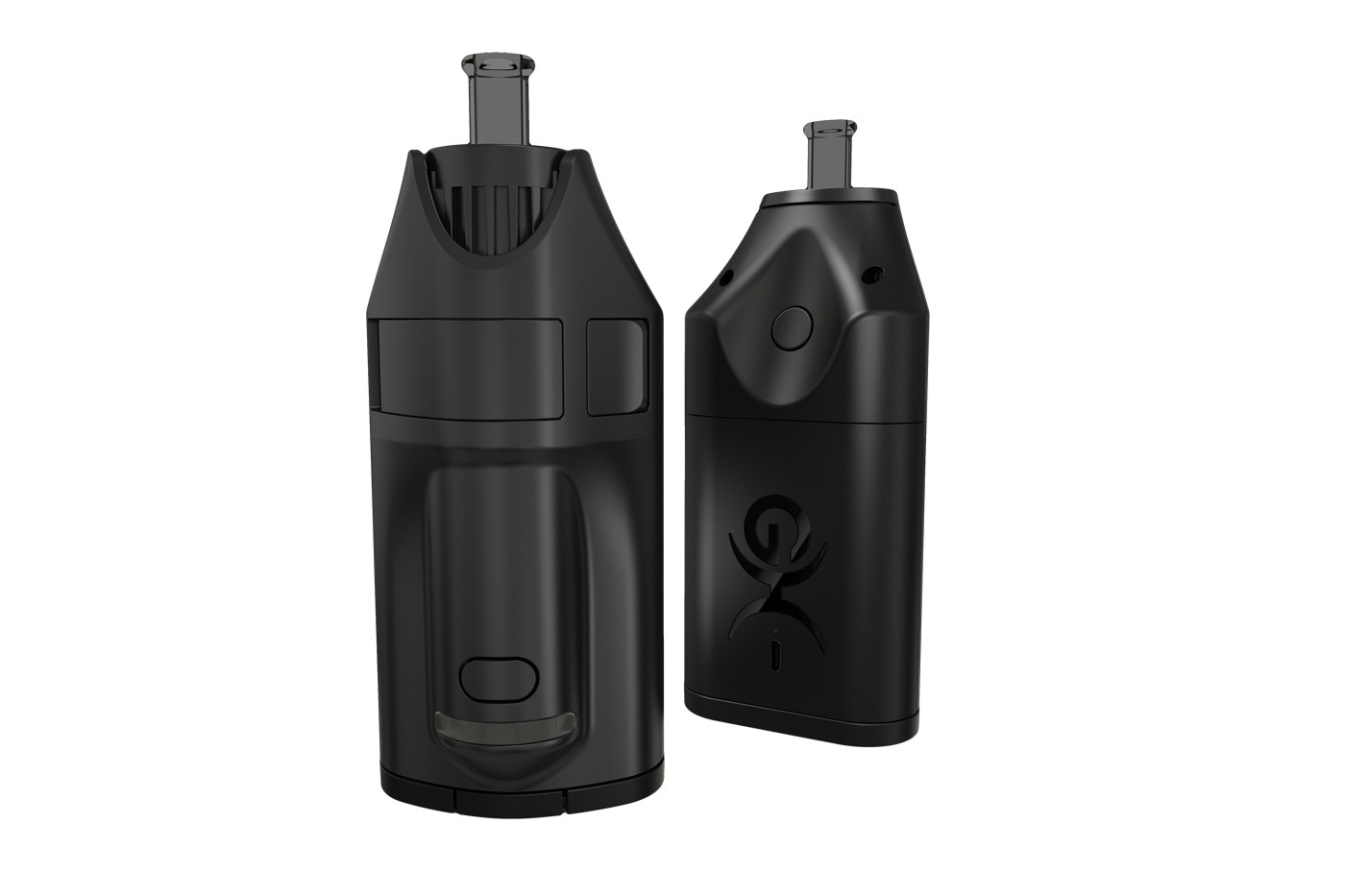
The company’s solution is tech-based. “We can precisely control exaction temperature profiles to deliver full and efficient extraction—including customizable settings via our app with a temp range from 284 to 428 degrees Fahrenheit,” said Jennings, who noted the MV1 is built to medical device standards to ensure safety and reliability.
The marketplace for feature-rich rigs is becoming crowded and includes devices of all sizes and shapes. In addition to the MV1, an impressive array of very different devices includes Dr. Dabber’s Switch, PAX’s PAX 3, Firefly’s Firefly 2, DaVinci’s Ascent, Storz & Bickel’s Mighty (for dry herb only), and the Loto Legend, to name a few. No matter their size, these vapes all share certain features, including, most importantly, temperature control. The Pax 3, for instance, offers more than sixty temperature settings. The Mighty allows users to select any temperature from 105 to 410 degrees Fahrenheit at any point during a session. “It’s nice to have that precise control for different types of herbs or just vaping at different points in the day,” the company’s website boasts. “Different temps, different effects.”
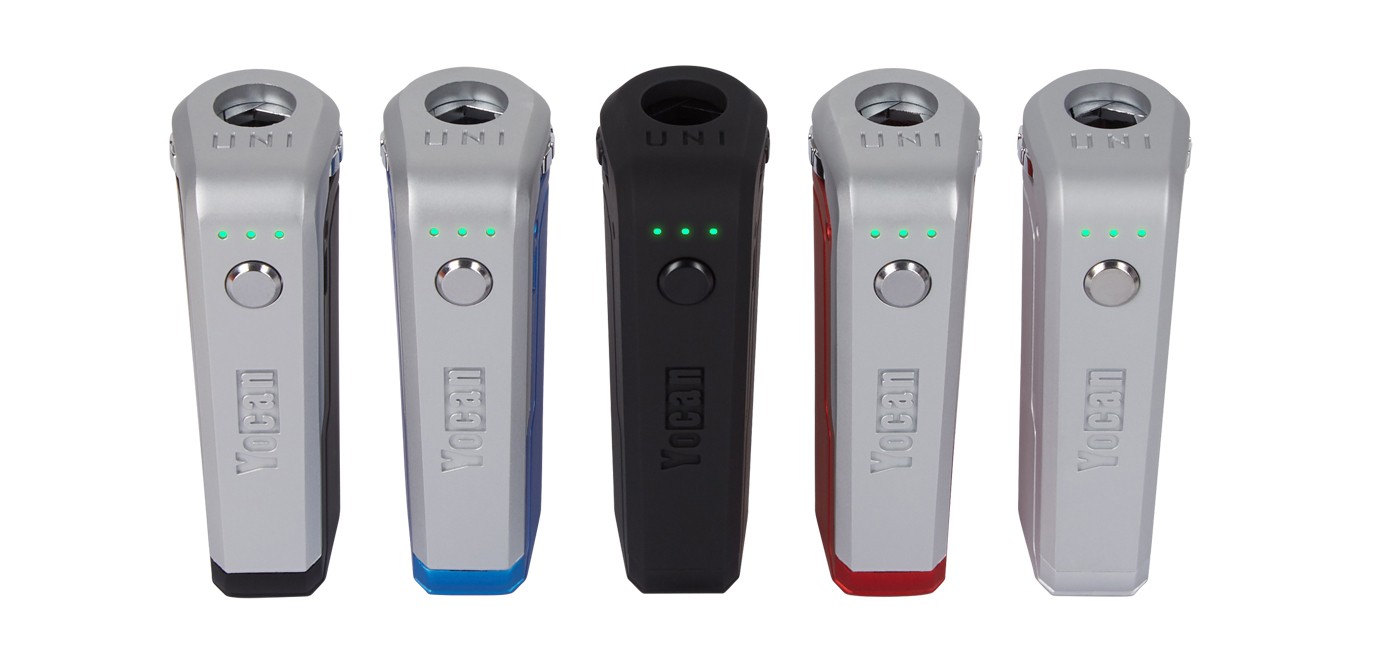
The price tag for the latest devices is not cheap, because the technology behind them is difficult to perfect. Most cost $400 or more and often come with a steep learning curve, but the upside is the ability to enjoy a range of cannabis-derived products currently unavailable to users of the far more ubiquitous cartridges, disposables, and rechargeable pens.
A trio of new vaporizers for extracts are about to hit the market, according to distributor Greenlane. They include the Yocan UNI, which features an adjustable atomizer holder that’s compatible with 510 atomizers of any size, eliminating the need for multiple mod batteries. Up next is Grenco Science’s G Pen Nova LXE, an upgrade of the original that features a 650mAh battery to double the original’s output. Finally, the Firefly 2+ builds on the success of its namesake predecessor. A borosilicate glass vapor path keeps unwanted flavors from infiltrating material and helps cool the vapor. The bowl, also made of borosilicate glass, contains fifty-five air holes for easy draws, even heating, and no combustion.
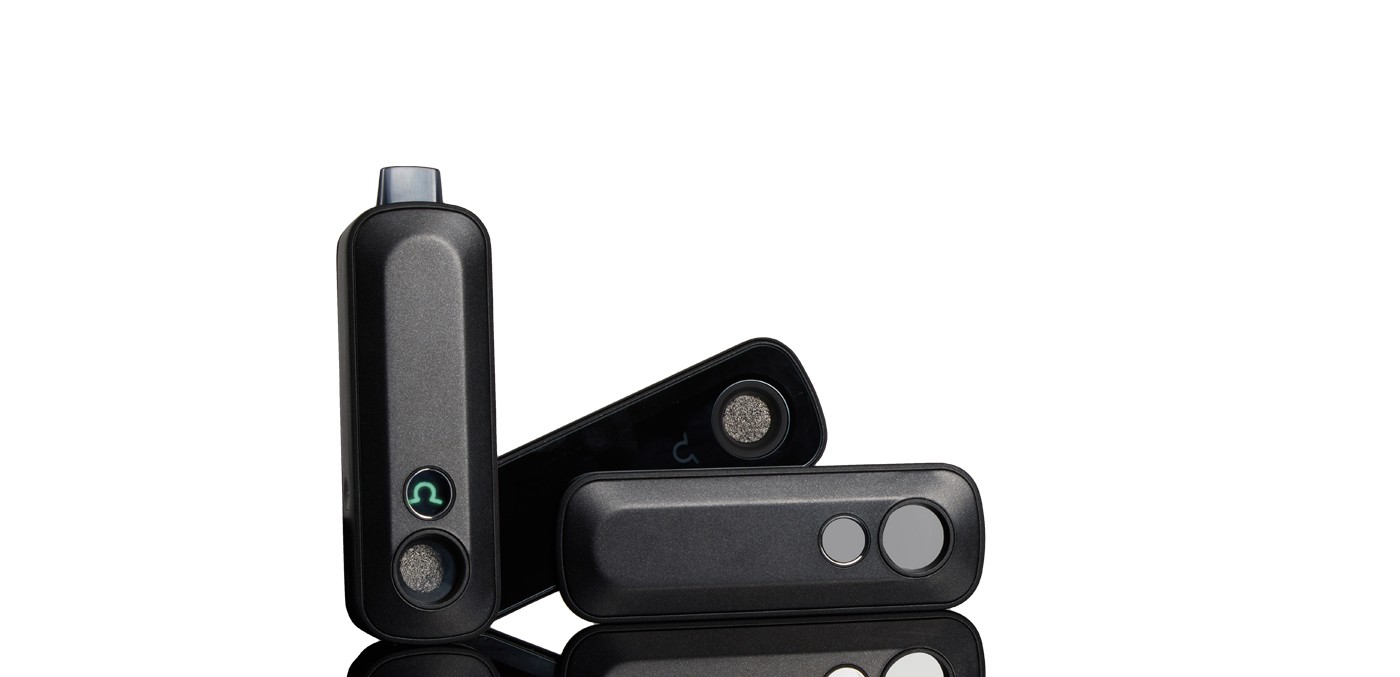
Meeting demand
Billy Oh is manufacturing manager for The Reefinery in Van Nuys, California, a vertically integrated business that includes retail, distribution, delivery, and manufacturing arms. The Reefinery is preparing to open a separate facility near the company’s retail headquarters that will facilitate expanded cultivation and manufacturing capabilities, including development of the company’s own branded vapes.
Like other small businesses preparing to scale their operations, The Reefinery faces a universe of options when it comes to choosing hardware. Oh looks to consumer behavior for guidance. “People are vaping now because it is convenient for them,” he said. “They also don’t have the smell issue, which is the main reason why people are going for vapes.”
Most people also are opting for the easiest and least expensive method of consumption, which often means a 510-threaded cartridge or disposable pen, both of which are readily available containing a variety of strains and flavors. The problem is choosing among the wide range of brands and quality levels.
“The number one issue people have with [510 models] is the cartridge always leaks,” said Oh. “This is the weakest point of it. You get oil right there, it gets dirty, you don’t have a clean connection, and the vaporizer ends up not working after a bit. It happens with every cart.
“I like the disposable model, because you wouldn’t believe how many people come in with battery issues with their cart,” he added. “And the price point is falling. Before, disposables were expensive, but not anymore.”
The Reefinery plans to invest about $1.2 million in machinery to process, fill, and cap its vape products. “You can go cheaper with machinery, but in the long run you’re paying more for labor and you don’t have as much output,” said Oh.
Oh said he’s working with San-Diego-based Convectium, whose products he called state-of-the-art. “It’s all food-grade, so there’s no leaching of heavy metals,” he said, referring to the issue of cartridges failing California’s heavy metals testing mandate, which went into effect January 1.
Reliability counts
West Coast Distributors is another cannabis company that had to make some serious decisions after deciding to venture into vaporizer production. Makers of the Ario line of vape pens, including the just-released Simple Squared and Contour 3, the Ario team took a look at the market and quickly realized a hands-on approach was required in order to maintain quality control from start to finish.
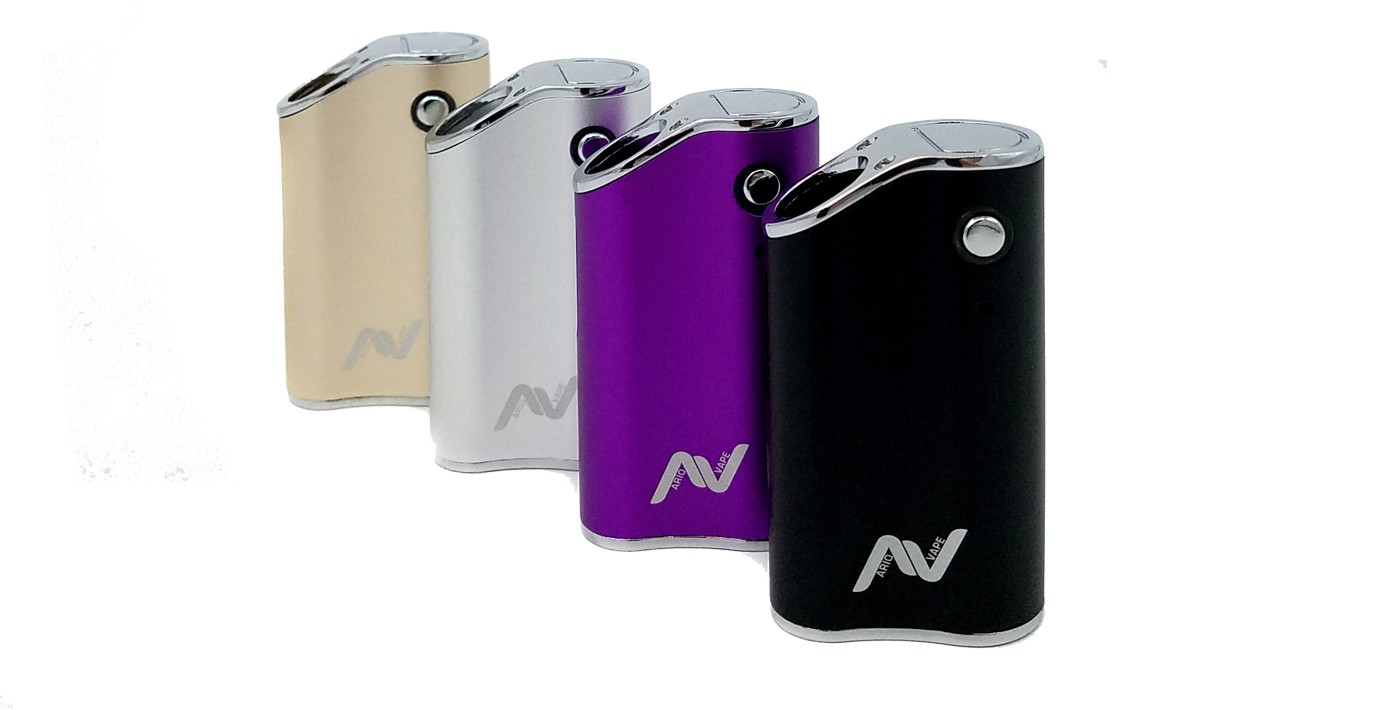
“Reliability is the most important thing right now, because there are so many unreliable products,” said Ben Bartell, who cofounded the company four years ago with his wife, Jenna. “I’ve been in dozens of factories in China that make all sorts of vaporizer products, and the breadth of incompetence in these factories is incredible. Unless you go and put your foot in them, you’d never know. It is totally the Wild West in Shenzhen. I mean, anybody can start a factory with zero expertise and just get online and sell knockoff products to an unsuspecting buyer.
“I will not tell you who,” he added, “but I’ve seen national brands in shops in factories over there that I would never ever consider doing business with. The problem is that if you don’t know anything about factory standards you wouldn’t know what to look for, so you can be impressed by the guys in the garage who have no clue there are factory standards that should be followed.”
It’s no wonder defective products find their way into the market. “What we saw just a few years ago, and it still happens today depending on the manufacturer, is you can get 20- to 25-percent failure rates on these vape pens,” said Bartell. “That’s why, when I got into this business, I posed a question to my engineers: Why is the industry having so much trouble with such a simple device?”
For Bartell, the answer was to take control. “About a year and a half ago we started designing our own proprietary products, because we wanted to reduce the confusion in the marketplace,” he said. Though designed in-house, everything, including electronic components, is made overseas. That means maintaining long-distance quality control. “We have people in China who oversee the factories and make sure they’re manufacturing to our standards,” he said. Even so, the logistics are daunting.
“The problem they have in China is they don’t have cannabis oil because it’s illegal,” said Bartell. “So, the way [manufacturing is] done is you have them ship samples, which you test and then send them feedback they use to send you more samples, and this process goes back and forth.”
Managing all that has been a challenge, but in doing so the Bartells have carved out a successful niche for their pens in a very crowded market. “We can barely keep them in stock,” he said. “We’re manufacturing them as fast as we can.”
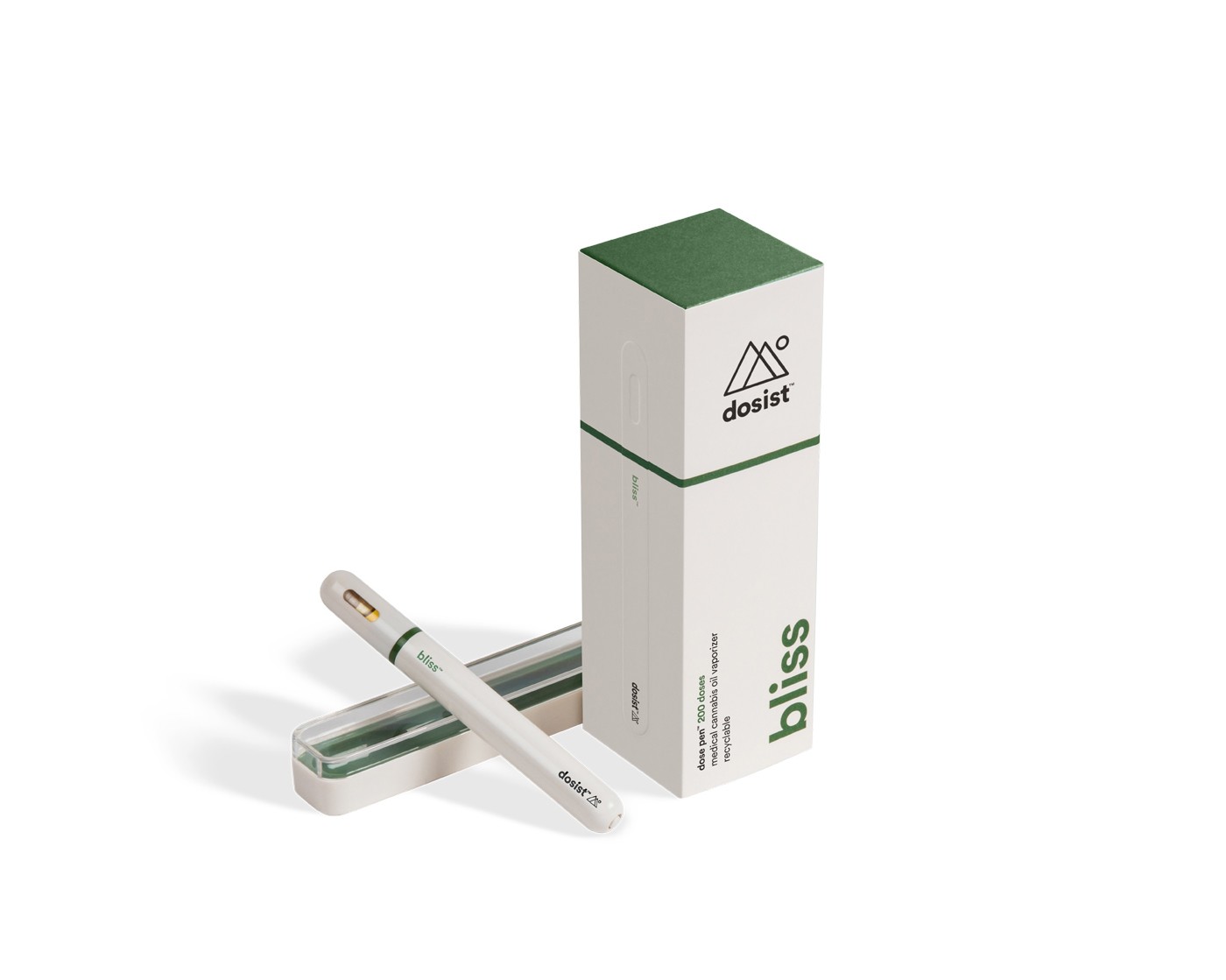
Finding solutions
Convectium founder and chairman Danny Davis met the hardware challenge head-on by essentially bringing operations home to San Diego. His rationale is brutally direct. “Every single piece of the machine is drastically improved by making it domestically,” he said. “Americans are very good at building machines. We just are. The Industrial Revolution was not an accident. We’re just not great at mass-assembly for low cost.”
Founded five and a half years ago as a product company, Convectium morphed into a manufacturer of proprietary machinery for filling and capping cartridges, pods, batteries, tinctures, capsules, and disposables after Davis realized the need for such equipment and then experienced firsthand the inconsistent quality of machinery made overseas. “They are just not great at building equipment over and over,” he said. The answer, he realized, was to do everything himself. “We rolled out the world’s first automated capper, and with our filling and capping machines you can fill and cap 6,000 cartridges per hour, which is unprecedented. Nobody is even close to us.”
The company also began manufacturing hardware such as cartridges and batteries and has expanded into sealing machines, disposable pens and syringes, and now pods. “We’re trying to drive products the market is demanding,” said Davis, “and what we’re hearing from the individual is, ‘I want something that every time I pick it up, it works and that’s it. I don’t have to preheat it, I don’t have to turn it on its side or upside down or cool it down. I just want to pick it up to use it.’
I think we will see a move to pods…into which you can put CBD oil, thin oil, thick oil, whatever you want, because they’re self-contained. —Danny Davis, founder and chairman, Convectium
“The challenge for us as manufacturers is that we never know what’s going in that cartridge,” he added. “Every customer’s oil is different; every terpene mix is different. Consumers are expecting hardware manufacturers to make a one-size-fits-all cartridge. The problem is none of our customers use one-size-fits-all oil. We have customers that have very thin oil, customers with very thick oil, customers with very thick oil cut with thin terpenes, and customers with thick oil cut with thick terpenes.”
In a sense, Convectium serves two customer bases. “Not only are we trying to create a positive fill experience for a non-contaminated product for the [business-to-business] side, but we understand they are not the end user,” he said. “The consumer takes and uses whatever we’ve built. That means we’re constantly trying to figure out how to appease the end user by giving them the simplest, easiest, sexiest device that works every time, and also offset that with something that is heavy-metals-tested, easy to fill and cap, doesn’t leak or clog, and uses one-size-fits-all oil. It’s a constant push and pull between us and the consumer—not in a bad way, but because we’re trying to understand the medium, which is the oil itself.”
Convectium, which joined the list of publicly traded cannabis companies in November, focuses on scale, which is why the company does not manufacture rigs. “If, as a company, you came to us and wanted us to build you a rig, we would do it—and have done it—but we wouldn’t be building it for the mass market, and it wouldn’t go up on the website,” Davis said. But he does believe someday the different types of vaporizers could merge into one device.
“I think the convergence of systems that look amazing but still have functionality is key,” he said. “The way a dab rig looks today, where you open up the briefcase and there are cords and nails everywhere… Now, imagine a rig that looks more like a PlayStation 4. That doesn’t seem as taboo, does it? Discretion is still a huge part of the cannabis industry, so we’re building devices for reality and trying to conform into the future. In the meantime, you have to have a hybrid of both.”
Davis mentioned four technology innovations the company has brought to market: An all-ceramic cartridge called The Reef that passes heavy-metals testing and locks shut; a bottom-airflow, bottom-absorption cartridge called the Riptide that doesn’t allow any oil to sit in the reservoir at the end of smoking; a new top-airflow, top-fill pod that is fully customizable to look like a key fob, a surfboard, or even an Apple remote; and the first all-quartz cartridge, which is about to be released.
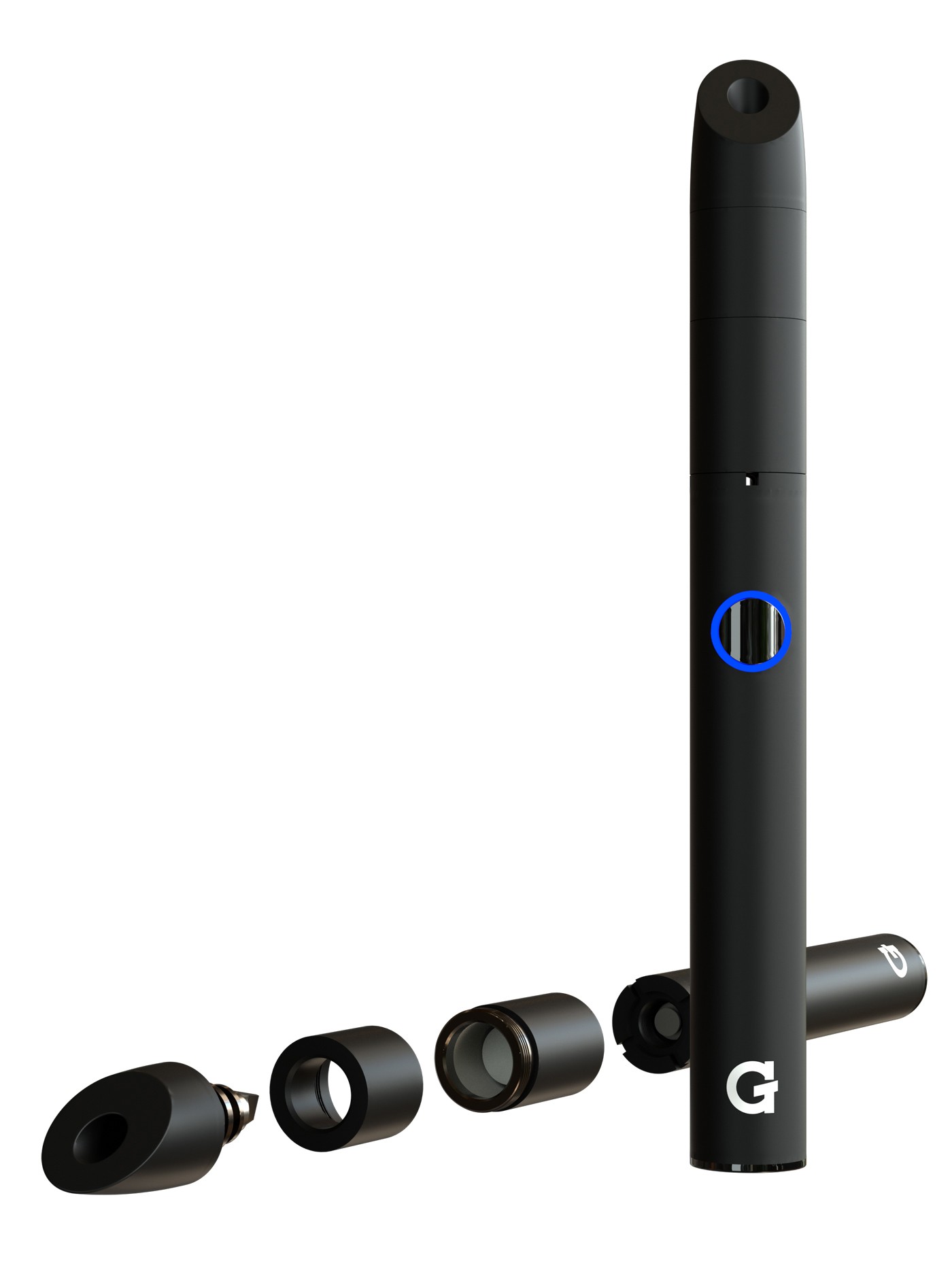
Market dynamics
The future of vaping is tied up in technology, market forces, and politics. Scott Gottlieb, the outgoing chairman of the Food and Drug Administration, in March told National Public Radio the agency may act to curtail the rate of teen e-cigarette use if the rate continues to climb. “If we see the number of kids using these e-cigarettes go up again in 2019 in the National Youth Tobacco Survey [due this summer]… If we see a big increase again, year over year, like we saw last year, I think the FDA is going to have to contemplate whether they ban the pod-based products [like JUUL] as a category” he said. “And the ban would be to require the companies to come in with applications to get these products on the market.”
Whether such a ban would extend to cannabis products is unclear, but the current debate surrounding devices that are multipurpose and increasingly discreet clearly is relevant.
In the meantime, the relationship between users and suppliers of vaporizers is and will remain the determining factor in how hardware evolves. “What does the consumer want? They want the easiest thing they can possibly use,” explained Davis. “What do businesses want? We want the best thing we could possibly give the consumer, but sometimes they don’t want to pay an extra forty cents for it because they don’t understand the value.”
The dynamic snakes its way throughout the vaporizer food chain. “Sixty percent of our customers buy stuff we are already selling and put their name on it,” Davis said. “The rest are looking at custom development, by which I mean [a device] that looks completely different from what’s on the market.”
He added an important caveat to that last data point. “Only 20 percent of them actually end up doing custom development, because of the cost.”
The percentage breakdown likely is consistent throughout the industry, where prices appear somewhat stable in an unstable environment. “A knockoff CCELL runs about $1.50 or so, and an authentic CCELL cartridge costs about $2.95,” said Davis. “Our cartridges and pods are all priced at $1.99.
“It’s about a 20-percent increase to work with a company that’s doing authentic things, but not as expensive as using authentic CCELL technology,” he continued, noting Convectium’s average customer buys about 20,000 cartridges or disposables a month. “Most order cartridges on a five-to-one basis—meaning 5,000 cartridges and 1,000 batteries—because they assume the customer already has batteries and all that sort of stuff.
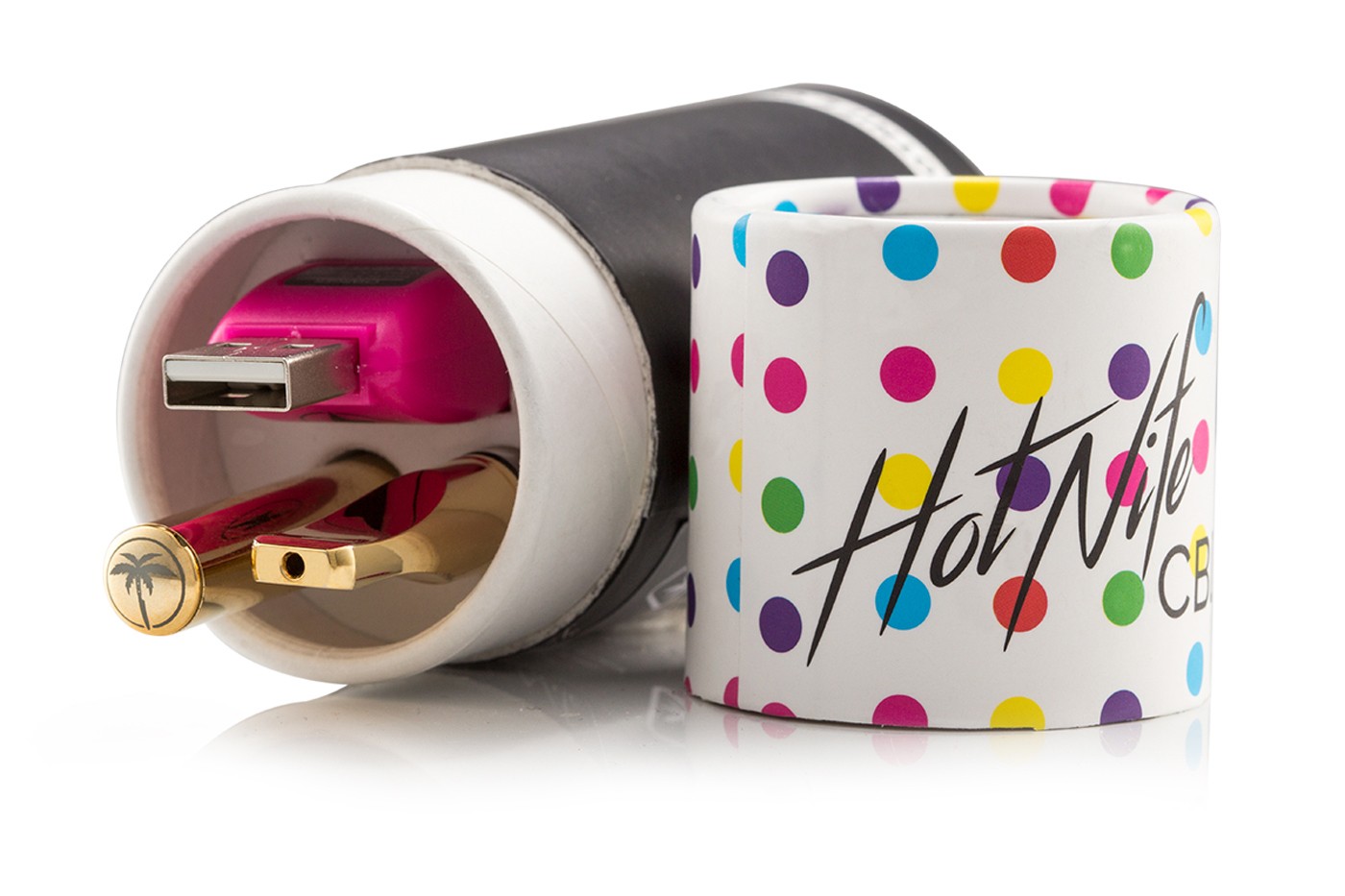
“Demand for disposables is skyrocketing right now,” he added,” but it may not be a long-term solution, because some of the states are considering outlawing throwaway batteries.”
Some brands wanting to stand out from the crowd are willing to absorb the cost of custom development. “Right now, we are developing [for clients] two disposables that look like nothing you’ve ever seen before,” said Davis.
It is unclear if The Reefinery is one of those clients, but Oh indicated the company is investing in Convectium’s filling and capping machines, a system that runs about $35,000 for just the equipment. Those are starting costs. “We have so much to pay for besides the machines and the labor [to run the machines],” he said. “Lab testing, the cost of biomass, the cost of solvent, equipment maintenance… A lot of things go into maintaining a cannabis lab.”
Canndescent fully committed itself to the Convectium ecosystem, according to Davis. “Their pen was custom-manufactured by us from start to finish,” he said. “They helped design it. We built it based on our underlying technology, and we built it to work with our entire platform. They can use our filling system to fill the cartridges, our capping system to cap the cartridges, and they can basically put [the pens] into their packaging and ship them out to the marketplace. Those are the types of projects we do. We have several custom projects like Canndescent, but very different.”
An admitted small fish next to the CCELL whale, Davis nonetheless sees a future ripe for innovation. “Look, CCELL is not having a hard time selling cartridges,” he said. “I don’t even know what their numbers are; I do know we are not even close. But this system of an enclosed closed-loop control system will be the future. If a standardized battery was released today that controlled temperature no matter what pod or cartridge is put on it, things could change. But right now the consumer is easy. They just want it to work and not leak. They’re not asking for much—but they are, because they’re asking for uniformity in a product with so many variables.
“I think having a ‘long-stick thing’ in your hand that you push a button to hit and it shows the oil is going to be outdated soon,” he added. “I think we will see a move to pods that are a little bit more discreet and hide what’s inside, and into which you can put CBD oil, thin oil, thick oil, whatever you want, because they’re self-contained.”
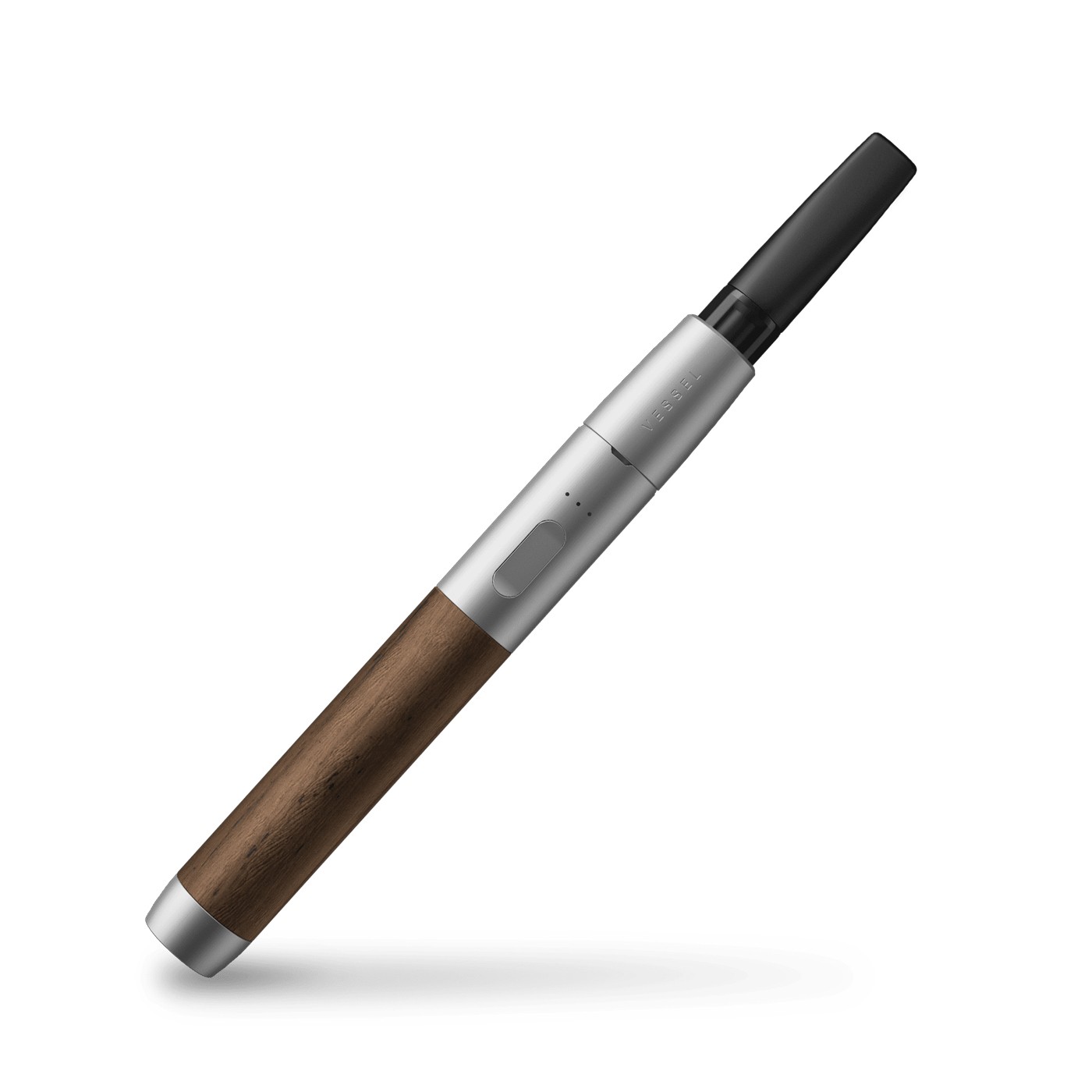
That will allow the market to become less taboo and more standardized. “As that happens we’ll see the true innovation, because we’re not seeing much now,” he added. “A 510 cartridge is not innovative in the sense that it’s widely demanded, and it’s only demanded because we don’t know any better. Once the consumer knows there are better devices out there, that is when the real revolution will come.”
Until then, manufacturers that desire to market cartridges, pods, pens, or more sophisticated vaping devices have a feast of available hardware from which to choose, ranging from the basically worthless to what might be called engineering wonders. In today’s world, you can pay hundreds for a sophisticated rig or grab a disposable pen for $1 from dispensaries practically giving them away in order to sell margin-rich oil. Knowing the market, the limitations, and your capabilities, and then approaching a highly unregulated hardware environment with no illusions will help any business figure out where it wants to be within a vast range of possibilities.
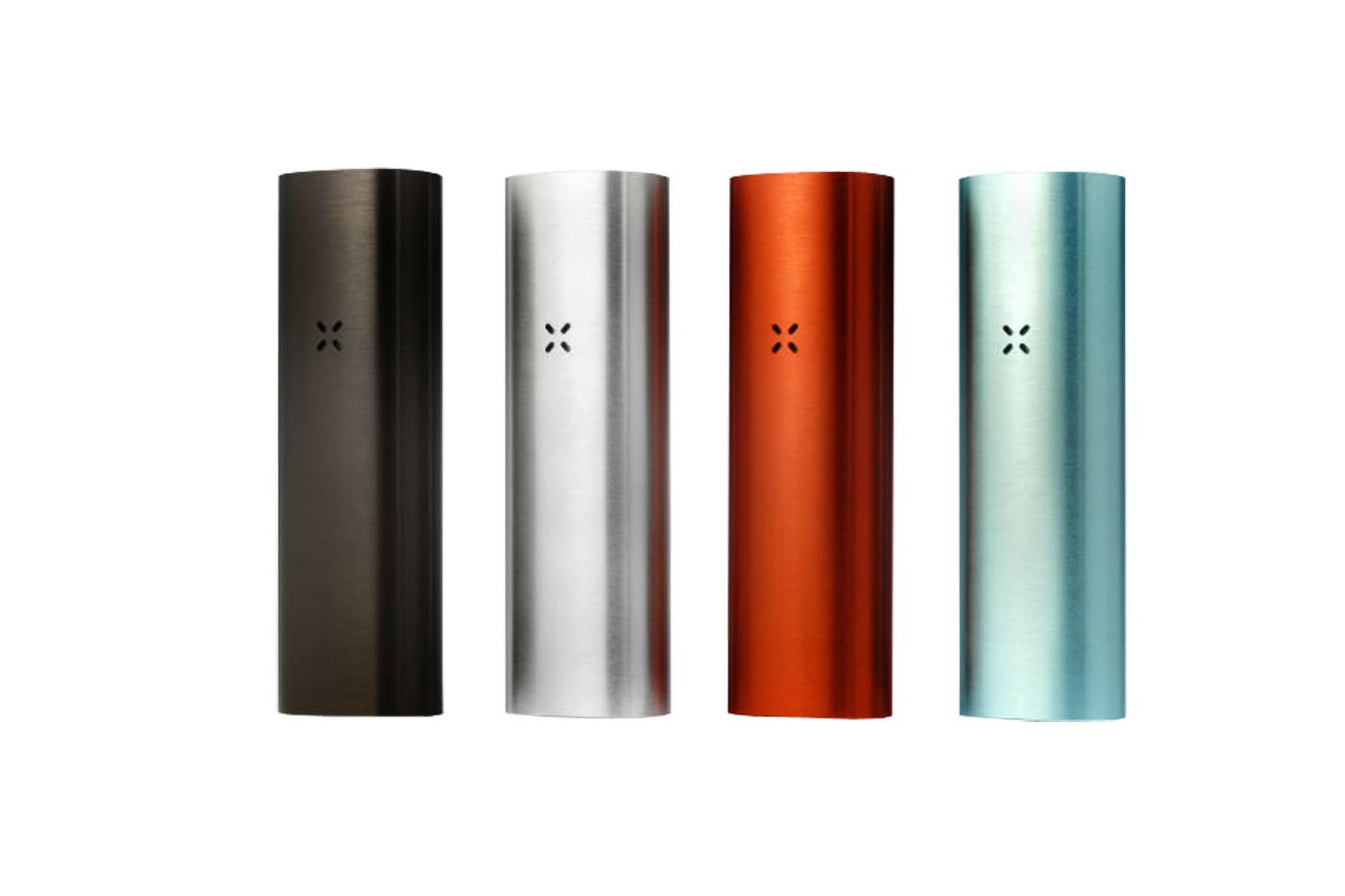
Vape Categories
Weed pens utilize a stainless steel or ceramic chamber to heat dry herb and usually employ LCD screens to assist with temperature adjustment. Pens use either convection or conduction heating, whereby dry herb either comes into direct contact with the heat source (conduction) or the apparatus blows hot air through the herb (convection).
Portable vaporizers are handheld devices for vaping herbs and concentrates. Their heating chambers are manufactured of high-quality materials like quartz, stainless steel, and ceramic. Portables generally are easy to use and moderately priced, and sometimes they include bells and whistles like temperature control.
Desktop vaporizers are a more traditional way of consuming dry herb and concentrates. They include many parts and are more expensive than portable vapes, but they produce more high-quality vapor. They also typically aren’t updated as often as their less-stationary kin. Storz & Bickel’s Volcano, for example, first hit the market in 2000 and hasn’t been tinkered with since 2006, when the company introduced the Volcano Digital. Nevertheless, the Volcano products remain popular with consumers despite their hefty price tags: The Classic will set buyers back about $450, while the digital version demands a cool $750.
Smart Vapes
Artificial intelligence. Depending on one’s fondness for science fiction, level of tech geekhood, and tolerance for abuse by Facebook and Google, the term may engender excitement, curiosity, or outright dread. Nevertheless, most of us interact daily with some form of AI without realizing it. Even in a natural-products industry like cannabis, smart machines and software are on the rise.
Consider, for example, Motorleaf. Though its primary role is for greenhouse automation, Motorleaf’s system uses AI to help growers project harvest volume and obtain yield forecasts. Leaf works in a similar manner on a smaller scale, employing a proprietary wardrobe-sized cabinet instead of a greenhouse.
Potbiotics’s Potbot app uses AI to help patients, doctors, and budtenders identify potentially beneficial strains and make personal recommendations. Namaste Technologies is investigating new ways to incorporate machine learning from its recent acquisition, Findify, to match consumers’ wants and needs with products CannMart offers.
Most point-of-sale and track-and-trace systems incorporate AI components. Chatbots are starting to show up on dispensary websites as virtual customer service assistants, and AI helps sales representatives with cold calls by sifting through prospects to find the most and least likely buyers.
Can vapes withstand the pressure to merge, Borg-like, with AI much longer?
In a word: No. Tobacco platforms like IJOY’s Avenger and SMOK’s I-Priv already respond to voice commands. Medical cannabis company Lifespot Health has received approval from Australian regulators for its AI-enabled Medihale system that integrates monitoring software and biometric scanning with a vaporizer that provides feedback to patients and medical professionals.
“AI has potential in nearly all aspects of a consumer’s life,” said Ghost Vapes Chief Operating Officer Aric Jennings. “We feel that in time, once mass adoption of herbal vaporizers is widespread, there is the potential to use AI to spread the benefits and temperature profiles of specific herbs as they relate to ailments.” —Sue Dehnam











[…] into different products. These cannabis products can be found in dispensaries in the form of dabs, vape oils, capsules, and […]